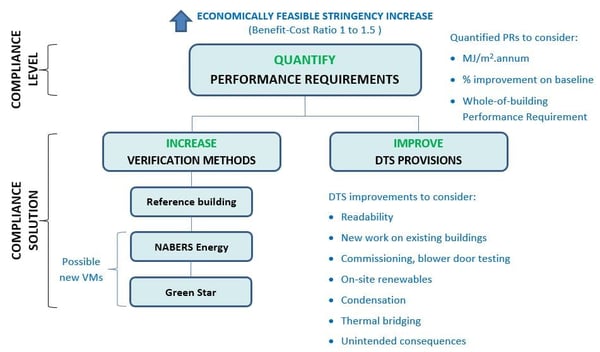Major Upgrades to Section J

As the ESD industry changes and new practices emerge and become more commonplace so must the rating systems which assess them, therefore in 2019 major updates to section J of the NCC will occur intended to create massive energy and greenhouse gas emissions savings. These updates are aiming to target common areas in buildings class 2,3, and 5 through 9 through which cost saving and ecologically beneficial goals can be met.
These new targets are attempting to focus on the economic feasibility of section J. Proposed changes are attempting to create energy savings from 23-53%, focusing on commercial energy requirements aimed at increasing flexibility of requirements and number of compliance options. These changes are based on the assumption that all buildings have an economic life of 40 years in attempting to make cost effective savings.

There are various proposed changes to the NCC from the ABCB. These involve (as outlined by the ABCB):
- quantification of the mandatory Performance Requirements
- introducing a NABERS Energy Commitment Agreement Verification Method
- introducing a Green Star Verification Method
- introducing commissioning requirements
- improved consideration of on-site renewables such as photovoltaics
- improved thermal bridging requirements, and simpler Deemed-to-Satisfy Provisions. (ABCB, 2017)
All proposed changes are subject to economic evaluation, and have an intention of encouraging best practice by improving the deemed to satisfy solution. The above changes are to come into effect on the 1st of May 2019, the first changes available for public consultation will be available from February 2018 with the final changes being released for review in February 2019.
To read more about Section J, click here
References:







